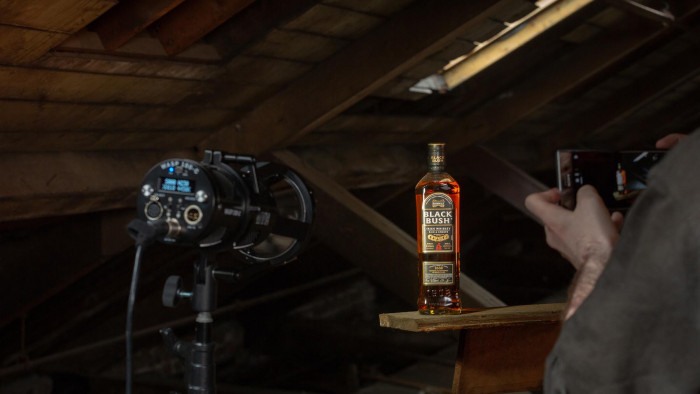Photos from Oxford's inner sanctums
Legendary photographer Martin Parr has spent two years capturing life at the elite university


Martin Parr has spent the last 40 years wondering what exactly it is that makes the British so British. Like Alan Bennett armed with an SLR, he’s dedicated much of his working life to conducting a forensic examination of national identity. From the Whitby Goth Weekend to the so-called Rhubarb Triangle, royal wedding celebrations in Walsall to snowned-under shopping centres up north, there are very few inches of the country left untouched by Martin Parr.
The recently published Oxford – which, as the title suggests, is a collection of photographs taken in Oxford – is a continuation of Parr’s insatiable investigation into how the UK’s ruling establishments work. Or, at least, how they’d like to be seen working.
Oxford saw him spending two years roving around the institution’s seemingly-endless series of colleges, each of which required individually-mandated permission to be photographed. That level of immersion is a hallmark of Parr’s body of work, whether he’s cataloguing methodism in the West Yorkshire hippy enclave of Hebden Bridge or memorialising chip shop-congregating holidaymakers on the Wirral peninsula.

© Martin Parr/Magnum Photos
The result of those two years, split between 50 to 60 visits, is a beguiling assortment of photographs that give the viewer the briefest glimpse into a world that both resembles our own—students prodding at iPhones and draining cans of Diet Coke—and something almost completely other. A world where mundanity meets arcane ritual. Where tuxedo-clad future statesmen hurl each other into rivers. Where George Galloway leans nonchalantly against an ornate wooden box while a girl in a fur shawl stares impassively at the back of his trilby. Where mortarboard wearing dignitaries scoff strawberries in a staid marquee during a garden party.
It manages to make Oxford, arguably the world’s most prestigious seat of learning, seem alternately quaint, commanding, and undeniably odd. In that sense, it is vintage Parr: a series of British idiosyncrasies laid bare by a master of his art.
Speaking to me over the phone from Martin Parr Foundation in Bristol, Parr tells me that thanks in part to the efforts of a producer he’d been put in touch with by Bodleian Library, he found himself gaining access to “around 80%” of the colleges and events he’d wanted to photograph. Given the university’s clandestine ways, he figures that was extremely good going.

© Martin Parr/Magnum Photos
“Oxford life is very secret. Traditions are kept secret and reveal themselves slowly,” he says, adding “It is very much a hidden society. Most mortals won’t even get a chance to even go into a college, unless its an open day. This is a chance to see behind the scenes. I’ve gone and explored and documented it so other people get a chance to see what’s going on.”
To his credit, Parr’s lens refuses to blend that level of secrecy with a kind of bland romanticism that it’d be all too easy to apply to his subject. There’s very little tenderness in, say, the close-up shots of ruddy-faced, tear-stained, pissed-up post-ball revellers clutching at their loosened bow ties, or the image of a mulleted man posing for a life drawing class at the Ruskin School of Art.
Yes, there are gowns and rowing boats and morris men and ostentatious banqueting halls and David Attenborough and Stephen Hawking, but more importantly, we’re taken from term to term, college to college, in a way that somehow lessens the often-deafening thud of privilege that comes with whatever peeks were given into the Oxbridge machine. It is that searching for, and finding the quotidian rhythms in the spectacular, the grand, and the glamorous that makes Oxford an integral part of Parr’s work. As he says, “I think the every-day is very underrated when it comes to photography.”

© Martin Parr/Magnum Photos
In Martin Parr’s hands, Oxford stops being this rigidly imposing symbol of the potency of power, and becomes a place of work. “I’ve photographed things like the City of London, and Christ’s Hospital,” he says, regarding his recent explorations of the upper echelons of society. “I’ve been to Harrow, I’ve visited the British army in Germany.” Studies in power, and power structures, these works are just as important to the Parr oeuvre as the shots of hanky-wearing granddads and Irish cattle auctions. “These places run the country! So really, if you’re thinking about documenting contemporary Britain it’d be an oversight not to include establishments like that.”
He’s also keen to stress that despite the almost antiquated place Oxford holds in the public imagination, the university is a living, breathing, modern thing. “It is at the cutting edge of contemporary Britain. It isn’t out of sync. Think about the huge and very impressive research that goes on in Oxford. Although it has that sense of tradition, it’s alive now. And that’s what makes for this interesting contradiction.”
One of those contradictions is serious and impossible to ignore. Any discussion about the University of Oxford is also, implicitly at least, a discussion about class and inequality. Recently over 100 MPs called for “urgent action,” over the Oxbridge admissions processes, and Oxford itself has come under justifiable fire for what critics understandably refer to as “social apartheid,” after it was revealed that in 2015, one in three colleges failed to admit a single black British A-level student in 2015.

© Martin Parr/Magnum Photos
I ask Parr whether he got a sense of how monocultural the student body was during his time there. “This stuff has been in the press recently and it’s completely true,” he said, cagily. “There are obviously more white people from independent schools. The colleges are very keen to try and reverse that trend. But,” he admits, “that’s easier said than done.”
With our time very nearly up, I question Parr about his long-term commitment to defining and redefining Britishness. Does, I wondered, he think that we’re so wrapped up in trying to work out what a national identity is that we’re invariably losing sight of what “national identity” even means?
“Well,” he says, “It’s a yes and no thing. I still think we are peculiarly British. Although the world’s getting more homogenised, we still have our quirks and our traits, which I find very appealing. I have a love/hate relationship with Britain, which I explore through my photography. It’s very therapeutic in that way.”
Martin Parr’s Oxford is out now on Oxford University Press.








